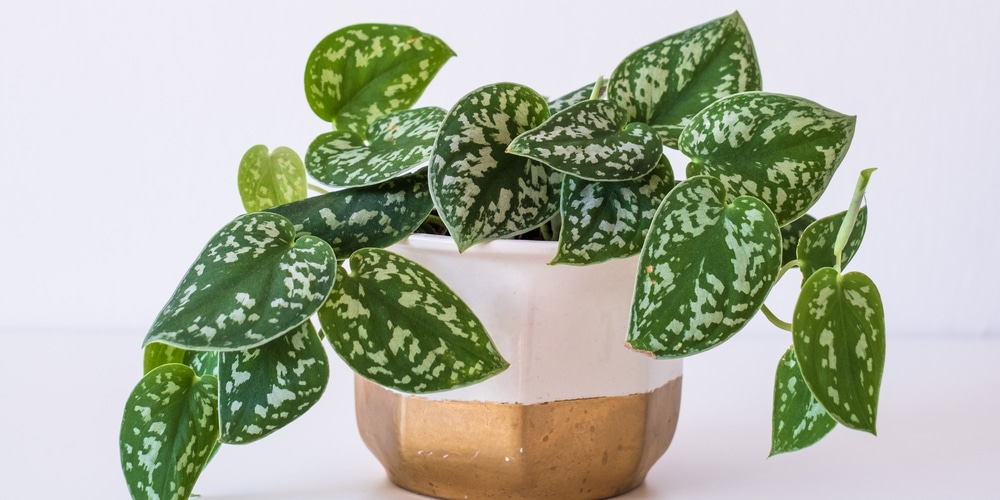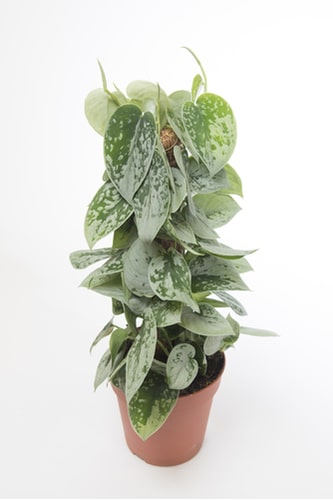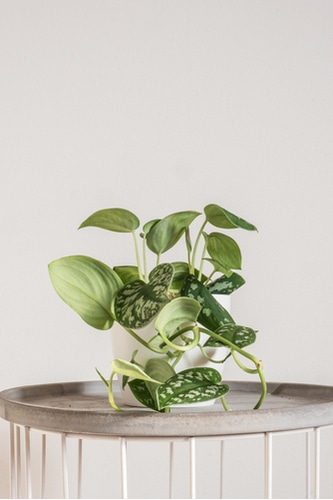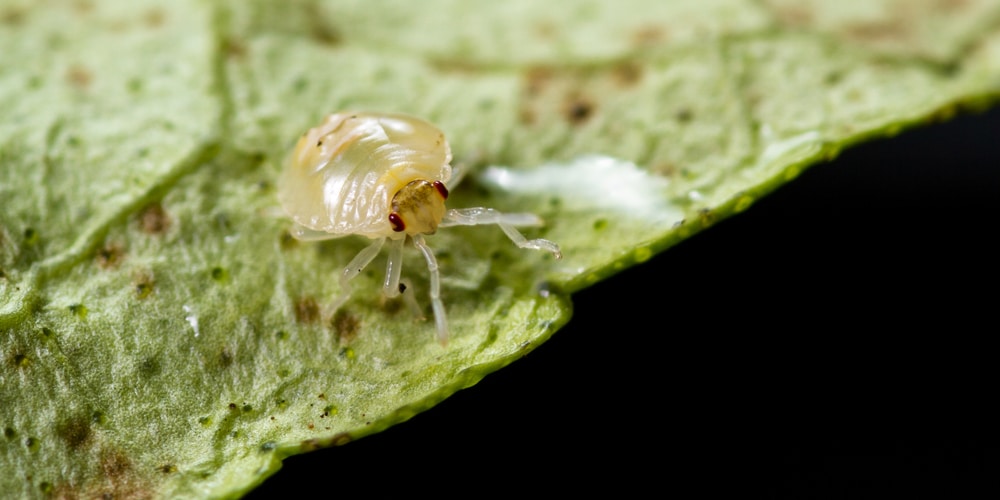Silvery ann pothos is relatively rare plants that don’t require much care and can survive with very little attention. Its botanical name is Scindapsus Pictus, and they are rarer than many people realize as other pothos varieties are often mistakenly called Silvery Ann. Let’s look at how to grow and care for a silvery ann pothos plant.
What is a silvery ann pothos?

Silvery Ann pothos is climbing vines that are part of the Araceae family. These plants are native to Asia and Australasia and are found in countries such as China, India, Australia, New Guinea, and the pacific islands. They can be grown outdoors in many places with warm climates. If you live in USDA zones 10 to 11, you can grow Scindapsus Pictus in your yard.
The Silvery ann pothos has heart-shaped leaves (like a heart-shaped philodendron), and their main attraction is the variegated pattern on the leaves with splashes of white, light green, and silver. Although they look beautiful, it’s worth noting that the leaves and stems are toxic to animals and humans if ingested. They can also cause skin irritation in some people, so be careful when handling your plant and keep it out of the reach of children and pets.
How to care for a silvery ann pothos?
Silvery ann pothos is a very easy-to-grow houseplant. They are resilient enough to handle neglect, but they will grow faster and healthier if you provide them with what they need. Here are some tips to help you grow a healthy and thriving silvery ann pothos plant:
Watering requirements
Allow the soil to dry out before watering again. Overwatering can cause root rot or fungal issues, so wait until the soil is almost dry before watering. You should always test the earth with your finger to see whether your plant requires water.
Sunlight needs
Silvery Ann pothos prefers bright indirect light to filtered sunlight. Indirect sunlight would be preferable because too much sun exposure will lead to leaf scorch, and the variegated leaves won’t look as nice. It’s best to give your plant at least six hours of indirect sunlight a day.
Temperature
You can keep your plant near a window where it gets good light and an average room temperature of between 65°F and 75°F. Silvery Ann Pothos plants can be grown outdoors
year-round in USDA zones 10 and 11. In other climates, you can you’re your pothos onto a patio for the summer. Don’t leave your plant outside in winter if frost is expected as these plants are tropical and, as a result, aren’t very cold hardy.
Soil
Use a good quality potting soil mixed with perlite or sand for fast drainage. You can also use small rocks or gravel in the bottom of the pot to improve drainage further. Silvery Ann Pothos plants prefer the soil to be slightly acidic with a pH range of between 6.1 and 6.5. They like soil that’s loose and well-draining.
Humidity
This plant doesn’t like overly dry air, so mist the leaves with water to increase humidity. You can also place it on a tray of pebbles filled with water to raise the humidity around it. Humidity should be kept between 50% to 70%.
Fertilizer requirements
You don’t need to fertilize Scindapsus Pictus often; once or twice a year should be fine. Use an all-purpose liquid fertilizer diluted by half when you do fertilize. Here are some excellent houseplant fertilizers.
Common problems and pests
Here are a few problems that can affect your silvery ann pothos plant:
Mold and mildew
Various types of molds will cause leaf discoloration and spots. You can treat mold by applying fungicide spray at the first sign of any fungal growth. Do not apply too much chemical spray because it can burn your plant’s leaves.
Leaf drop
If the leaves are drooping or wrinkling, then your plant needs more water. On the other hand, leaves will fall from the plant if it’s overwatered. Check the soil to see whether it feels completely dry or is waterlogged to find out what the problem is.
If the leaves fall easily without any resistance, then your plant is probably suffering from root rot. You can save it by removing all the soil from the roots, cutting off black, soggy roots, and then repotting your plant in new ground.
Leaf drop may also be caused by cold drafts or pest damage.
Pests
Healthy pothos plants are pretty pest resistant, but you may find that your plant is affected by sap-sucking insects. Aphids, spider mites, or mealybugs can all infest pothos plants. You can remove insects by hand or using a shower; if an infestation occurs, you may need to treat your plant with insecticidal spray or neem oil.
Conclusion
With proper care, you should be able to grow healthy and prolific silvery ann pothos plants. They’re easy and fun to grow, but over-watering will cause root rot and fungus issues. Be careful not to scorch or fry your leaves by exposing them directly to sunlight for too long. If your Scindapsus Pictus isn’t growing as fast as you think it should, try using a fertilizer formulated for houseplants or adding some rocks in the bottom of the pot to better drainage.


